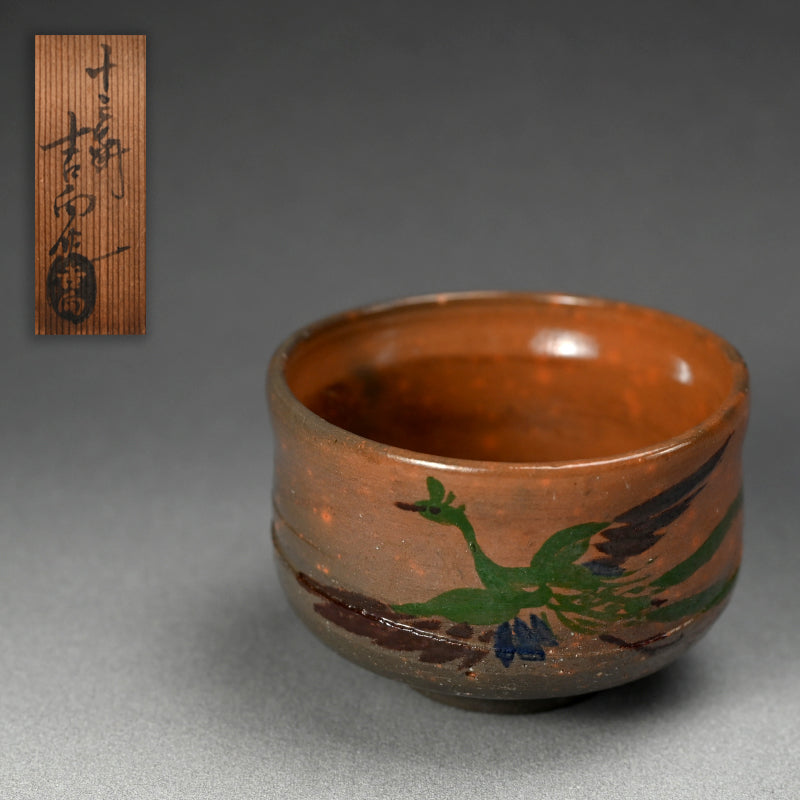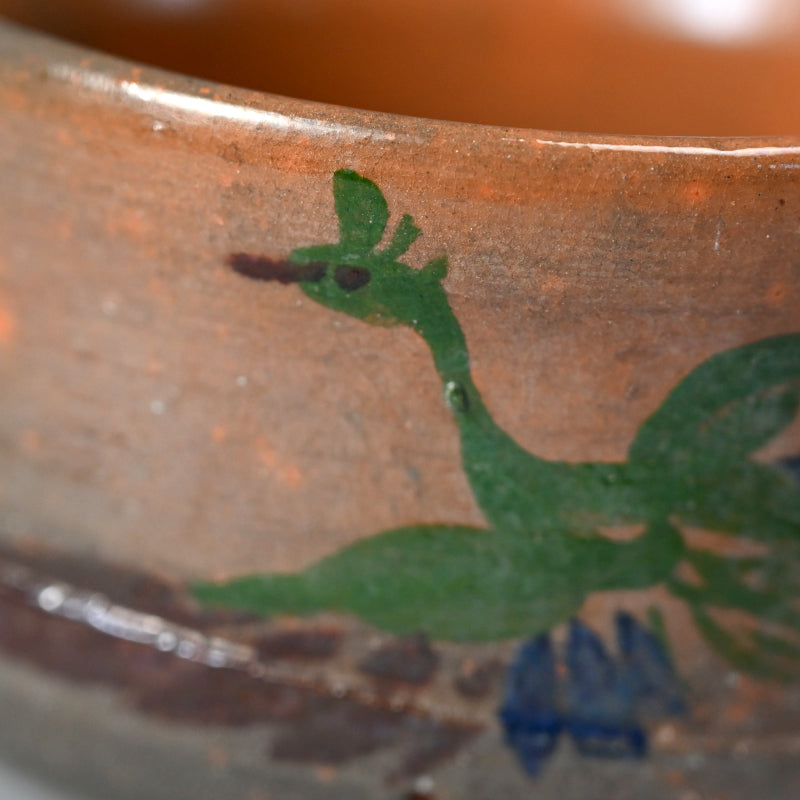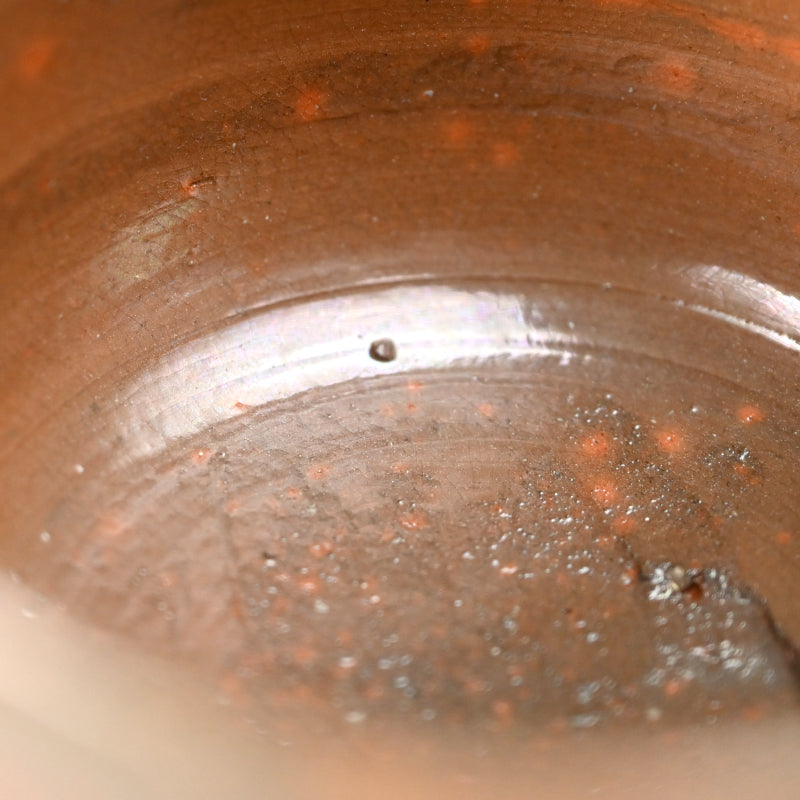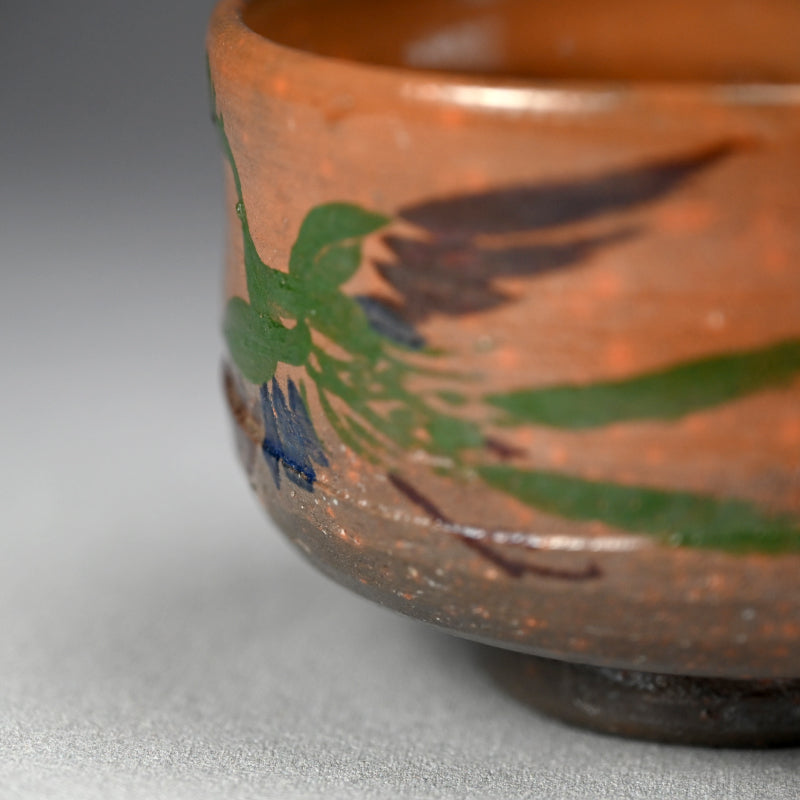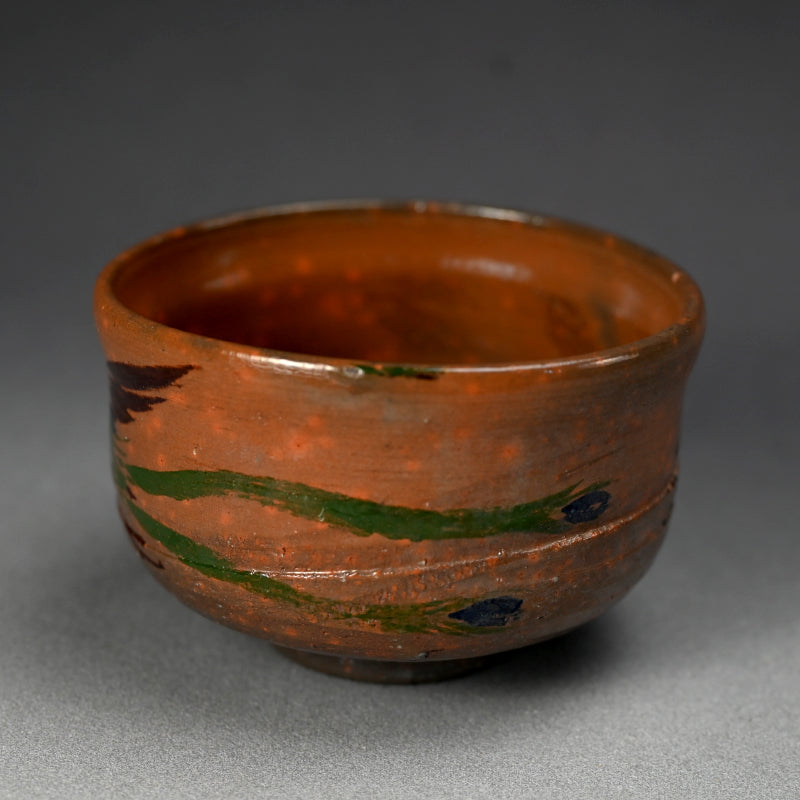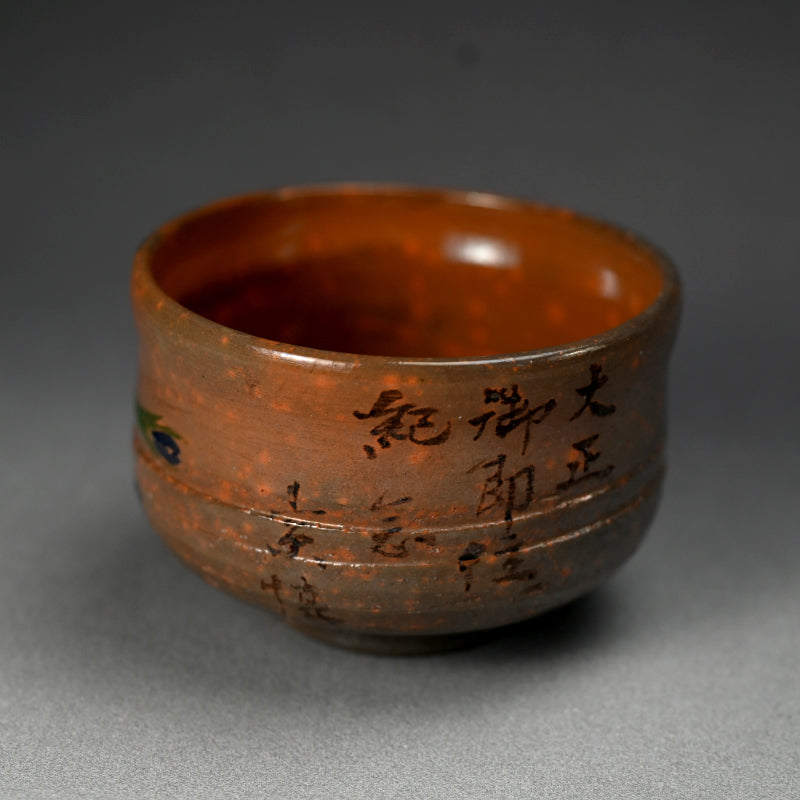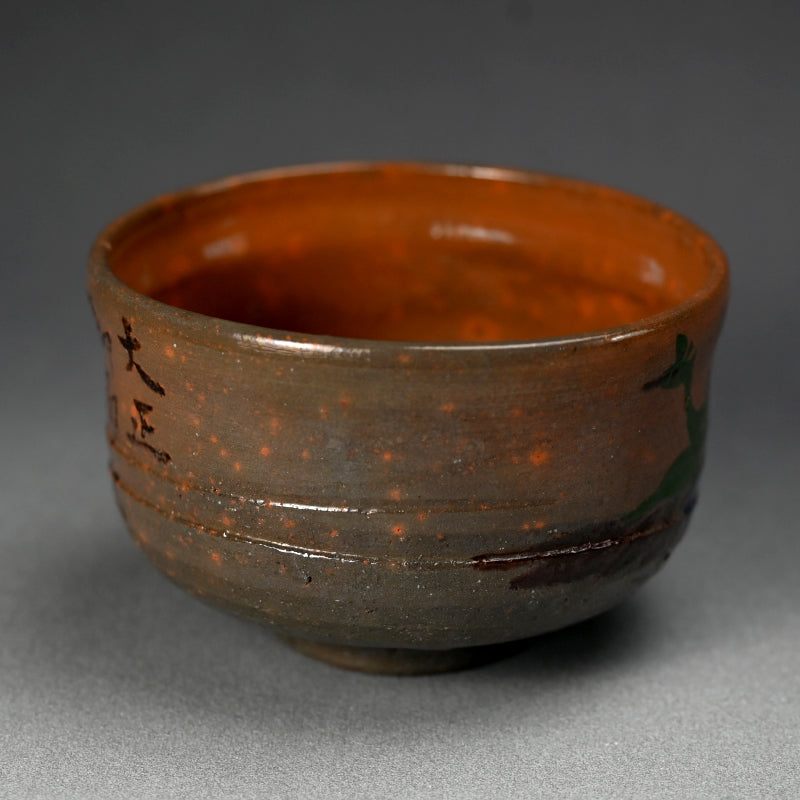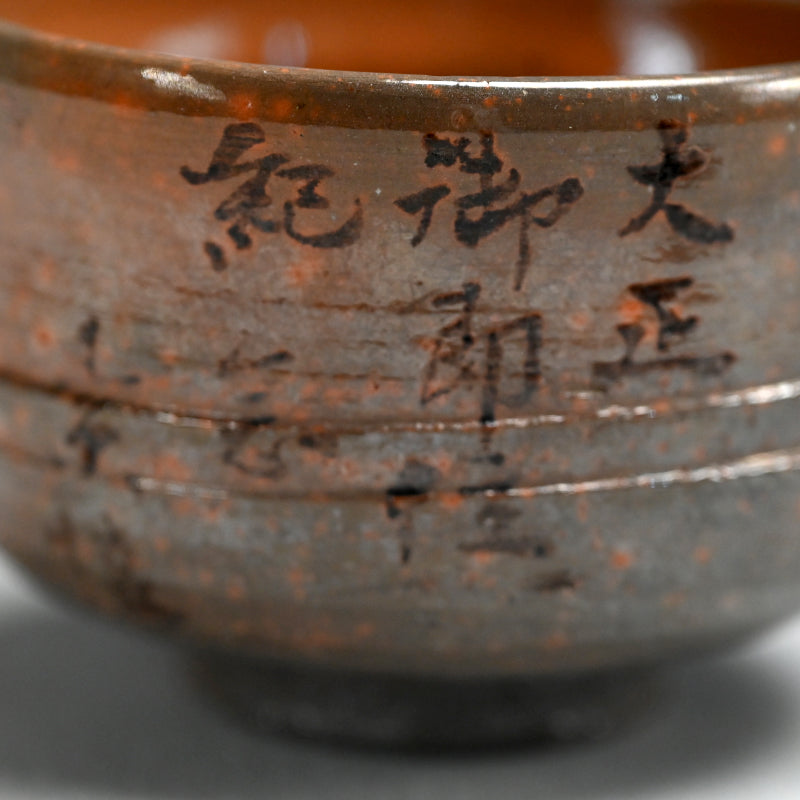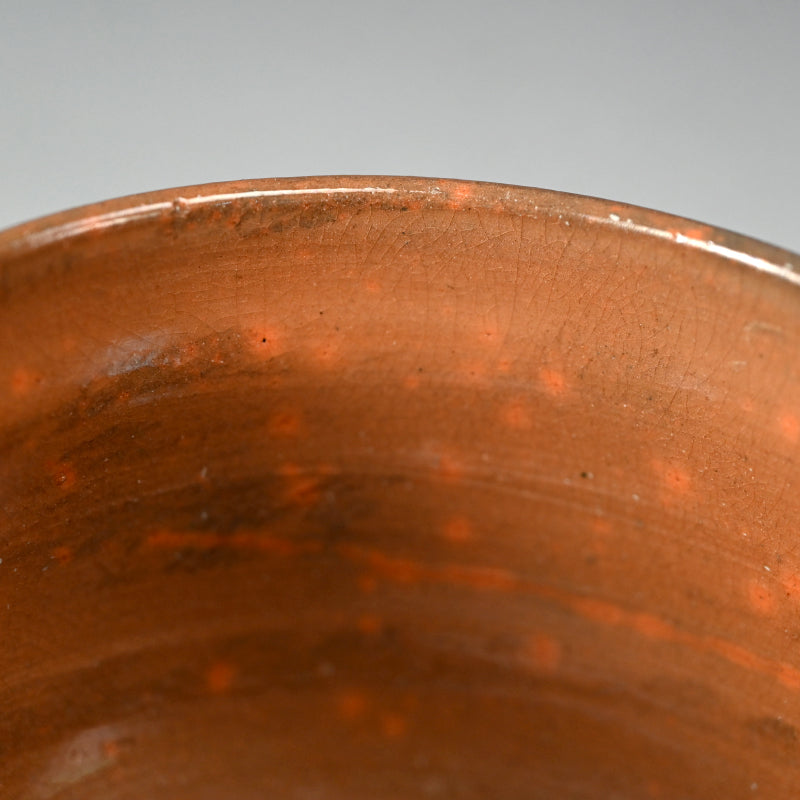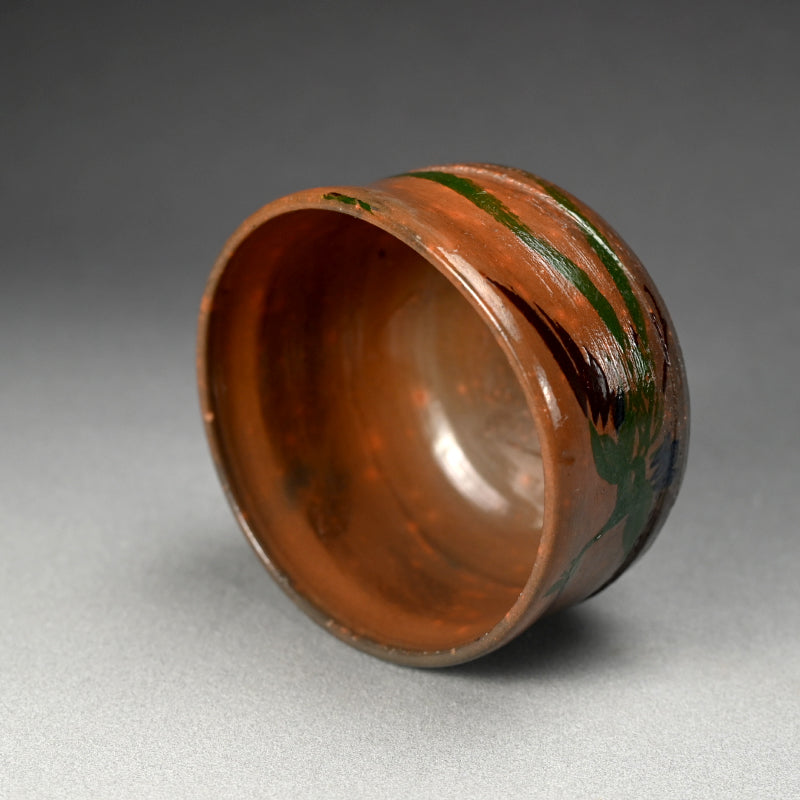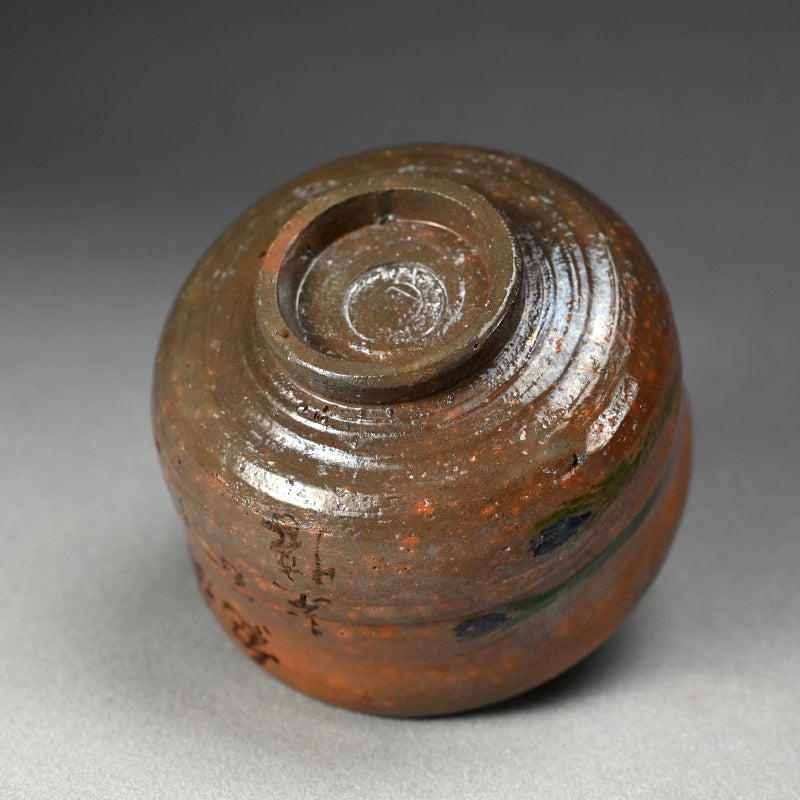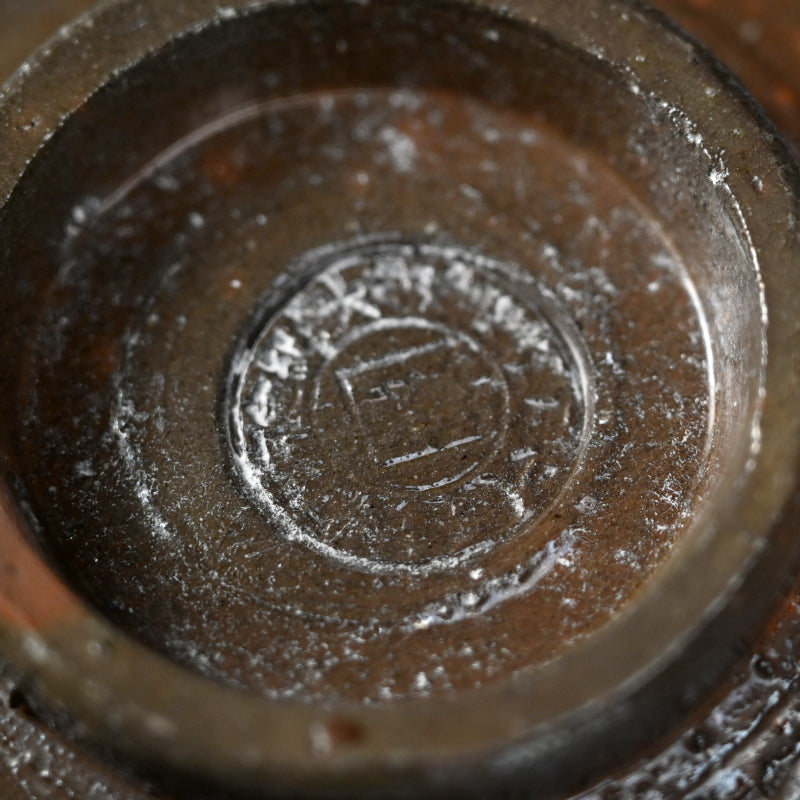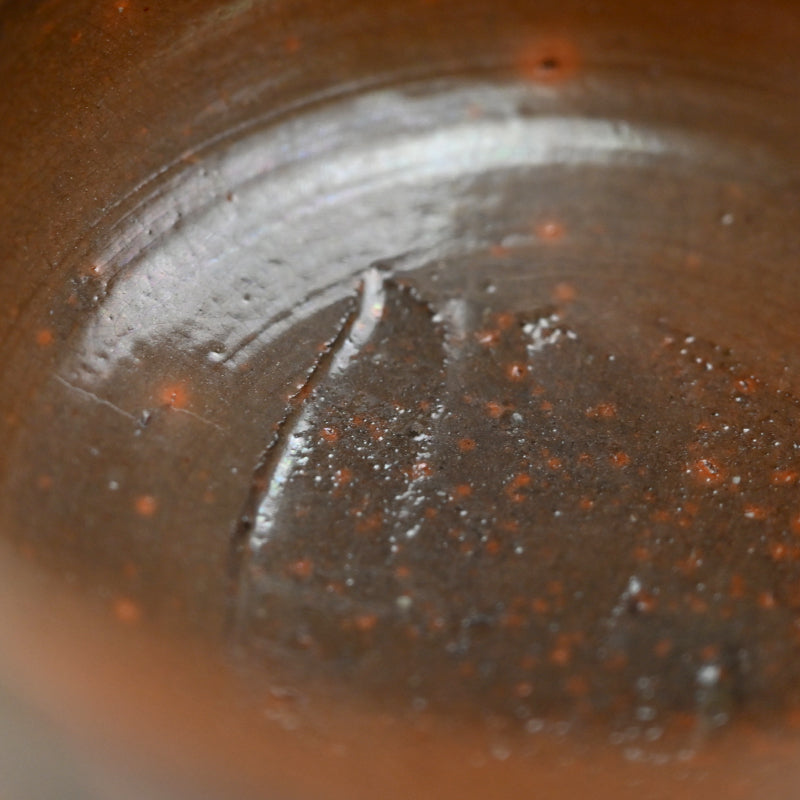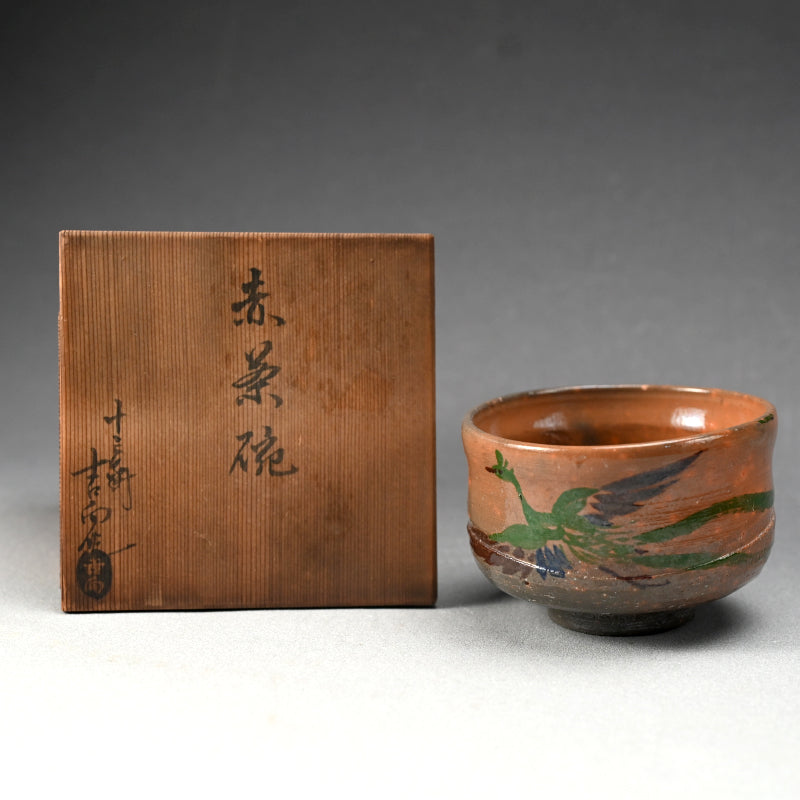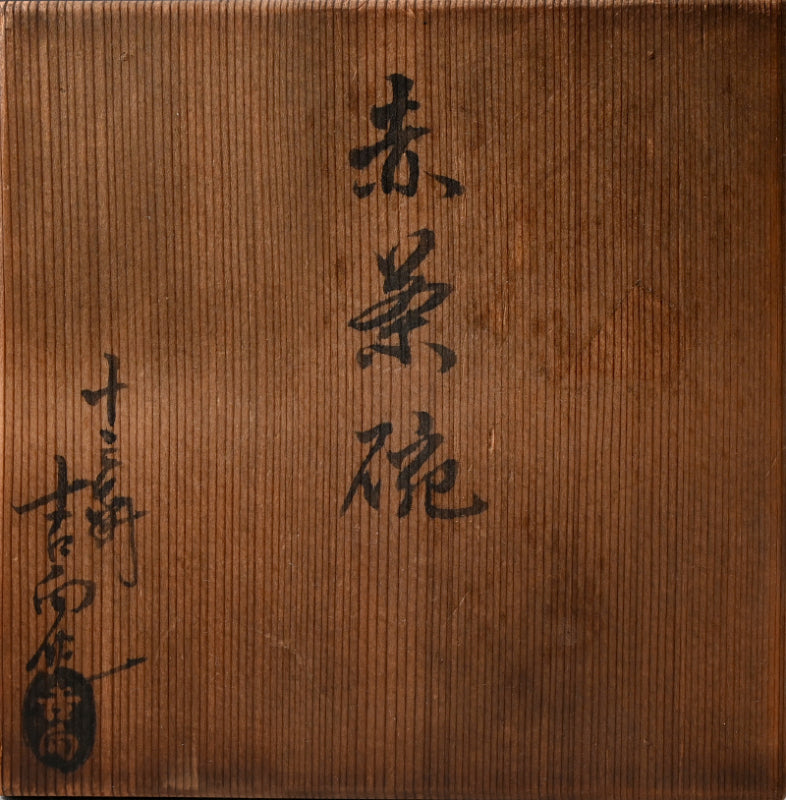1
/
of
15
19th c. Kikko Yaki Chawan Tea Bowl made for the Kyoto Hakurankai
19th c. Kikko Yaki Chawan Tea Bowl made for the Kyoto Hakurankai
Item Code: KN051
Regular price
¥70,000 JPY
Regular price
Sale price
¥70,000 JPY
Unit price
/
per
Tax included.
Couldn't load pickup availability
An aka-Raku Chawan decorated with a phoenix by Jusanken Kikko sealed on bottom with what appears to read “the 7th Kyoto Gosho Hakurankai enclosed in the original signed wooden box. It is 12 cm ( just less than 5 inches) diameter, 89 cm (3-1/8 inches) tall and is in excellent condition.
Kikko Jihei (the firs Jusoken, 1784-1861) was born in Kaminada Village, Iyo country (mod. Ōzu City, Ehime Prefecture), as the eldest son of Todara Genbei, a retainer of the domain. Before establishing his own kiln, Jihei learned various pottery techniques at kilns in Kyoto. He studied under some of Kyoto's foremost masters, including the first Takahashi Dōhachi and the first Kiyomizu Rokubei. After receiving guidance from these emblematic potters of the era, he decided to set up his kiln in Jūso Village, Osaka, for its high visibility. In 1817 at the age of 33 he was commissioned by Mizuno Tadakuni, who later became the Lord of Osaka Castle, to present works to the 11th Shogun, Tokugawa Ienari. These works included a food container (jikirō) adorned with cranes and turtles and a goldfish bowl. As a result, Tadakuni bestowed upon Jihei the kiln name "Kikkō" along with a gold and silver seal. From 1819, at the age of 37, Jihei adopted the surname Kikko. In 1827, he took on the name Kikko Jusoken. Kikko Jusoken worked on his creations at kilns from Osaka to Edo. The first Kikko Jusoken had no children. However, he passed on his kiln in Jūso Village, Osaka, to his niece's son, Kameji, who became the second-generation Kikko, and his own sister's son, Yoemon, who became the third-generation Kikko. The first four generations died within a short time span of each other, all by 1863, and this is likely the work of the fifth generation, who held the reins until 1891.
Kikko Jihei (the firs Jusoken, 1784-1861) was born in Kaminada Village, Iyo country (mod. Ōzu City, Ehime Prefecture), as the eldest son of Todara Genbei, a retainer of the domain. Before establishing his own kiln, Jihei learned various pottery techniques at kilns in Kyoto. He studied under some of Kyoto's foremost masters, including the first Takahashi Dōhachi and the first Kiyomizu Rokubei. After receiving guidance from these emblematic potters of the era, he decided to set up his kiln in Jūso Village, Osaka, for its high visibility. In 1817 at the age of 33 he was commissioned by Mizuno Tadakuni, who later became the Lord of Osaka Castle, to present works to the 11th Shogun, Tokugawa Ienari. These works included a food container (jikirō) adorned with cranes and turtles and a goldfish bowl. As a result, Tadakuni bestowed upon Jihei the kiln name "Kikkō" along with a gold and silver seal. From 1819, at the age of 37, Jihei adopted the surname Kikko. In 1827, he took on the name Kikko Jusoken. Kikko Jusoken worked on his creations at kilns from Osaka to Edo. The first Kikko Jusoken had no children. However, he passed on his kiln in Jūso Village, Osaka, to his niece's son, Kameji, who became the second-generation Kikko, and his own sister's son, Yoemon, who became the third-generation Kikko. The first four generations died within a short time span of each other, all by 1863, and this is likely the work of the fifth generation, who held the reins until 1891.
Share
















